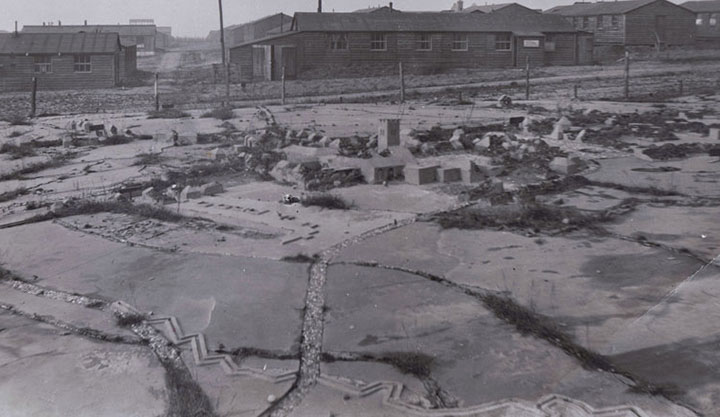
Excavation of World War 1 Messines model to go ahead in September
In a project led by Staffordshire County Council and funded by Natural England, a large concrete terrain model on Cannock Chase, representing a section of the Great War battle of Messines Ridge, is to be excavated.
The model was built at Brocton camp which, along with the camp at Rugeley, formed a large training area across Cannock Chase for British troops during the Great War. Construction of the camps had begun in early 1915 and by the end of the War over half a million men had passed through them, trained and ready to fight abroad. The two training camps were each intended to hold up to twenty thousand soldiers – the size of an infantry division at the time.
The Messines model had been constructed at Brocton in 1918 by men from the New Zealand Rifle Brigade, using German labour from the nearby prisoner of war camp. The use of trench maps and aerial photographs ensured the model, constructed in concrete, had a high degree of accuracy; trenches, strong points, railways, roads and buildings all being represented. The model was used to train soldiers in topography and to show how an impeccably planned battle could be won with minimal casualties. One feature, believed to be a ‘viewing platform’ around three sides of the model still exists.
Some exploratory work has already been undertaken at the site, and a full excavation will take place in September 2013. The work will involve the careful excavation, recording and reburial of the Messines model. Experts from the County will be working closely with their colleagues to ensure the site is protected as it is excavated, whilst minimising any damage to the surrounding wildlife and habitat.
Staffordshire County Councillor, Mike Lawrence, Cabinet Member for Communities, Culture and Localism said: “As we approach the centenary of the start of the First World War in 2014, it is essential we continue to teach future generations about the legacy of the conflict.
“We must never forget the great sacrifices made and this exciting excavation project will help achieve that and showcase Staffordshire’s role in the Great War.
“As custodians of this important landscape we want to bring the site to life and learn what it was like for men from across the UK and our allied countries, as they trained for trench warfare.
“Staffordshire has as good a claim as anywhere in Britain to be the national focus for the commemoration of World War I. The National Memorial Arboretum in Alrewas is a national and international centre for commemoration, while the Cannock War Graves cemeteries, the Staffordshire Regimental Museum and many memorials offer poignant reminders of the Great War.”
